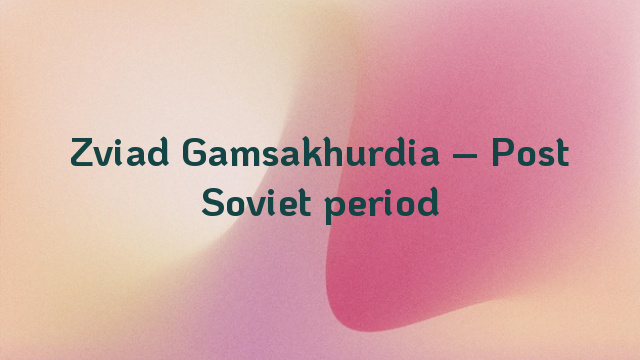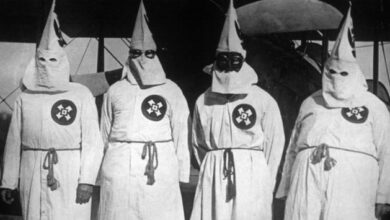
Zviad Gamsakhurdia – Post Soviet period
Opposition pressure on the communist government was manifested in popular demonstrations and strikes, which ultimately resulted in an open, multiparty and democratic parliamentary election being held on October 28, 1990. They were won by the “Round Table” coalition headed by the leading dissident Zviad Gamsakhurdia, who became the head of the Supreme Council of the Republic of Georgia. On March 31, 1991 Gamsakhurdia wasted no time in organising a referendum on independence, which was approved by 98.9% of the votes. Formal independence from the Soviet Union was declared on April 9, 1991, although it took some time before it was widely recognised by outside powers such as the United States and European countries. Gamsakhurdia’s government strongly opposed any vestiges of Russian dominance, such as the remaining Soviet military bases in the republic, and (after the collapse of the Soviet Union) his government declined to join the Commonwealth of Independent States (CIS).
Gamsakhurdia was elected president on May 26, 1991 with 86% of the vote. He was subsequently widely criticised for what was perceived to be an erratic and authoritarian style of government, with nationalists and reformists joining forces in an uneasy anti-Gamsakhurdia coalition. A tense situation was worsened by the large amount of ex-Soviet weaponry available to the quarreling parties and by the growing power of paramilitary groups. The situation came to a head on December 22, 1991, when armed opposition groups launched a violent military coup d’etat, besieging Gamsakhurdia and his supporters in government buildings in central Tbilisi. Gamsakhurdia managed to evade his enemies and fled to the breakaway Russian republic of Chechnya in January 1992.
The new government invited Eduard Shevardnadze to become the head of a State Council – in effect, president – in March 1992, putting a moderate face on the somewhat unsavoury regime that had been established following Gamsakhurdia’s ouster. In August 1992, a separatist dispute in the Georgian autonomous republic of Abkhazia escalated when government forces and paramilitaries were sent into the area to quell separatist activities. The Abkhaz fought back with help from paramilitaries from Russia’s North Caucasus regions and alleged covert support from Russian military stationed in a base in Gudauta, Abkhazia and in September 1993 the government forces suffered a catastrophic defeat which led to them being driven out and the entire Georgian population of the region being expelled. Around 14,000 people died and another 300,000 were forced to flee. Ethnic violence also flared in South Ossetia but was eventually quelled, although at the cost of several hundred casualties and 100,000 refugees fleeing into Russian-controlled North Ossetia. In south-western Georgia, the autonomous republic of Ajaria came under the control of Aslan Abashidze, who managed to rule his republic from 1991 to 2004 as a personal fiefdom in which the Tbilisi government had little influence.
On September 24, 1993, in the wake of the Abkhaz disaster, Zviad Gamsakhurdia returned from exile to organise an uprising against the government. His supporters were able to capitalise on the disarray of the government forces and quickly overran much of western Georgia. This alarmed Russia, Armenia and Azerbaijan, and units of the Russian Army were sent into Georgia to assist the government. Gamsakhurdia’s rebellion quickly collapsed and he died on December 31, 1993, apparently after being cornered by his enemies. In a highly controversial agreement, Shevardnadze’s government agreed that it would join the CIS as part of the price for military and political support.




